Case 10
- Lady Barker
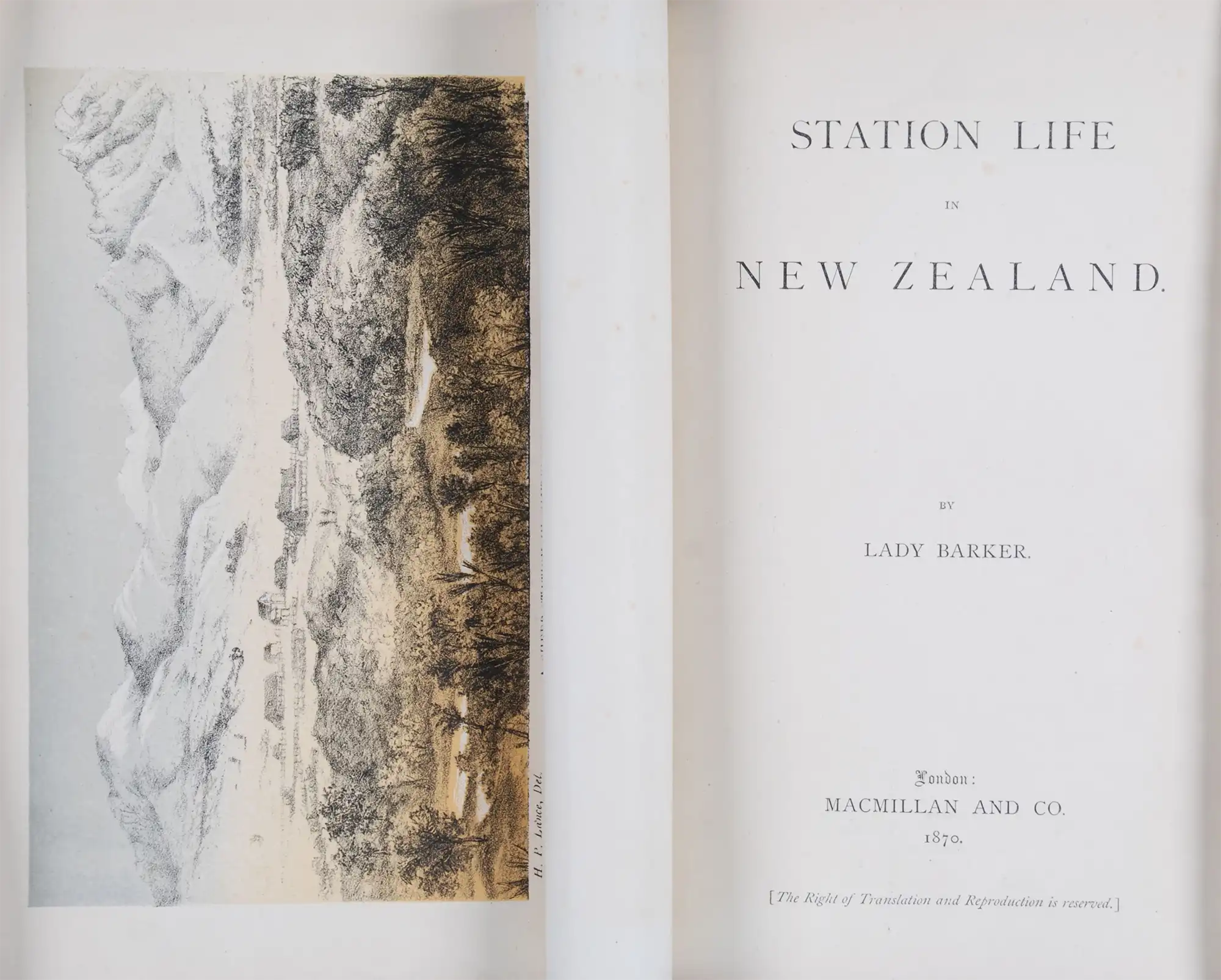
Lady Barker. Station life in New Zealand. London: Macmillan, 1870.
Lady Mary Anne Barker (1831-1911) is best known for Station life in New Zealand, first published in 1870. It is a lively account of her experiences as the wife of a Canterbury sheep farmer, Frederick Napier Broome, her second husband (and later, an eminent colonial administrator).
Born in Jamaica, Lady Barker was a lady of empire who travelled widely, joining Broome in New Zealand via England in 1865. Broome purchased a Canterbury sheep run on the south bank of the Selwyn River. After three years, in December 1868, the couple returned to England and worked as journalists.
Station life in New Zealand, based upon Lady Barker’s letters written home to her younger sister, was a huge success. Adopting the persona of an upper-middle class Englishwoman, her account is intimate of tone and reveals her enthusiasm for colonial life and sometimes unconventional attitudes. It established her literary reputation and a sequel, Station amusements in New Zealand, followed in 1873.
Lady Barker wrote some twenty books with a wide range of settings, but none were as successful as her two ‘Station’ works. Her subsequent books A Christmas cake in four quarters and Stories about- also feature New Zealand settings and references.
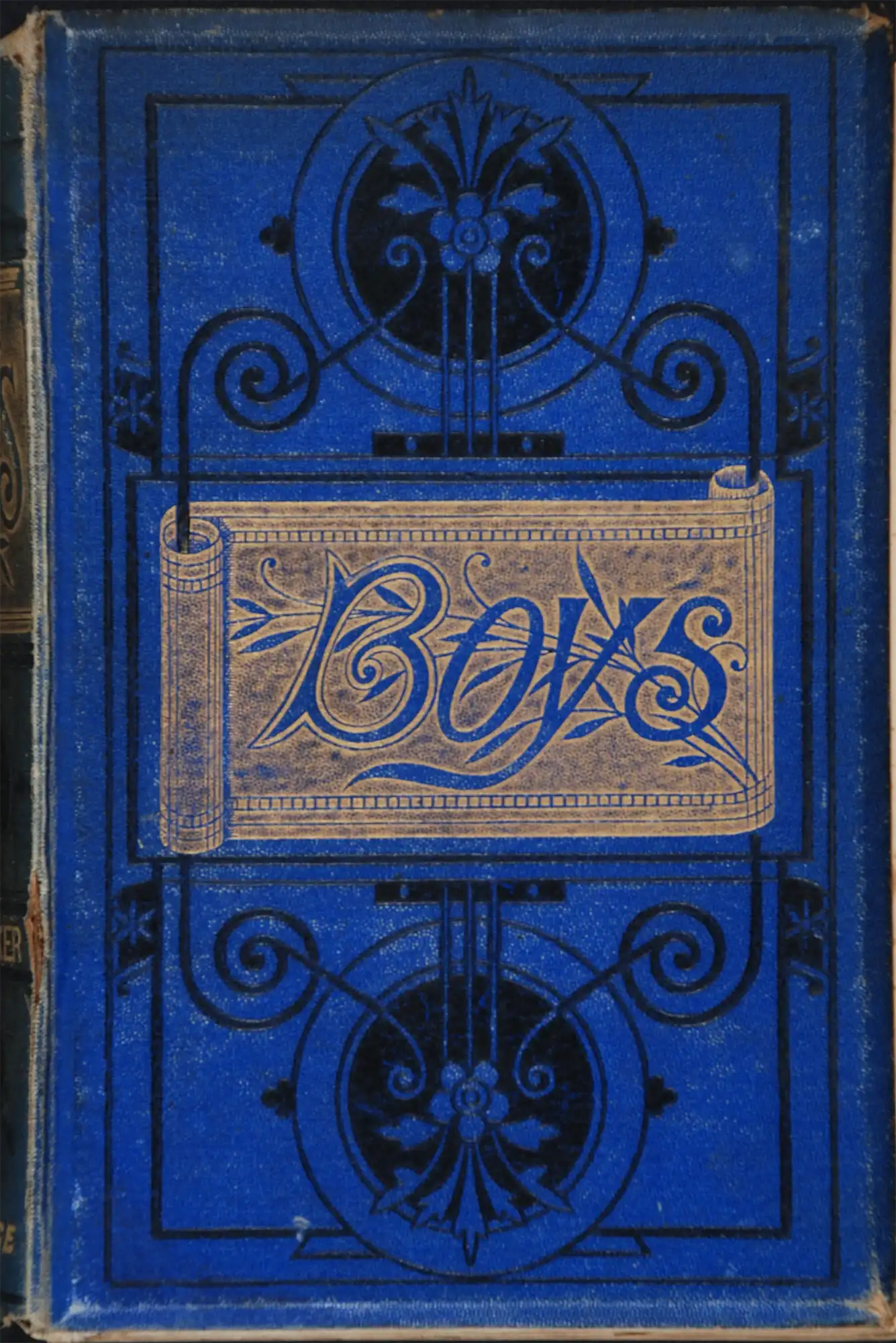
Lady Barker. Boys. London: George Routledge and Sons, 1874.
Lady Mary Anne Barker (1831-1911) is best known for Station life in New Zealand, first published in 1870. It is a lively account of her experiences as the wife of a Canterbury sheep farmer, Frederick Napier Broome, her second husband (and later, an eminent colonial administrator).
Born in Jamaica, Lady Barker was a lady of empire who travelled widely, joining Broome in New Zealand via England in 1865. Broome purchased a Canterbury sheep run on the south bank of the Selwyn River. After three years, in December 1868, the couple returned to England and worked as journalists.
Station life in New Zealand, based upon Lady Barker’s letters written home to her younger sister, was a huge success. Adopting the persona of an upper-middle class Englishwoman, her account is intimate of tone and reveals her enthusiasm for colonial life and sometimes unconventional attitudes. It established her literary reputation and a sequel, Station amusements in New Zealand, followed in 1873.
Lady Barker wrote some twenty books with a wide range of settings, but none were as successful as her two ‘Station’ works. Her subsequent books A Christmas cake in four quarters and Stories about- also feature New Zealand settings and references.
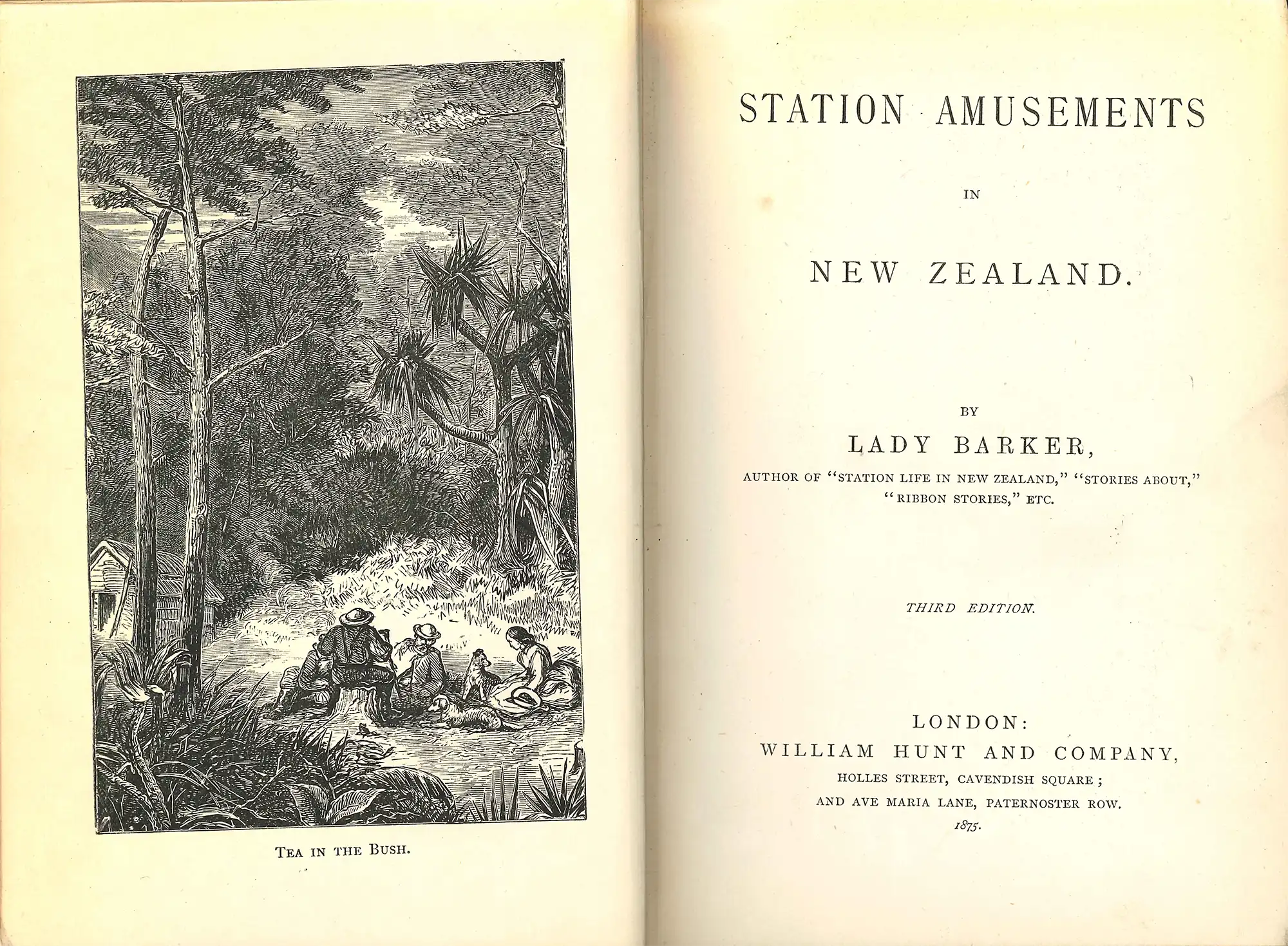
Lady Barker. Station amusements in New Zealand. London: William Hunt and Co., 1875.
Lady Mary Anne Barker (1831-1911) is best known for Station life in New Zealand, first published in 1870. It is a lively account of her experiences as the wife of a Canterbury sheep farmer, Frederick Napier Broome, her second husband (and later, an eminent colonial administrator).
Born in Jamaica, Lady Barker was a lady of empire who travelled widely, joining Broome in New Zealand via England in 1865. Broome purchased a Canterbury sheep run on the south bank of the Selwyn River. After three years, in December 1868, the couple returned to England and worked as journalists.
Station life in New Zealand, based upon Lady Barker’s letters written home to her younger sister, was a huge success. Adopting the persona of an upper-middle class Englishwoman, her account is intimate of tone and reveals her enthusiasm for colonial life and sometimes unconventional attitudes. It established her literary reputation and a sequel, Station amusements in New Zealand, followed in 1873.
Lady Barker wrote some twenty books with a wide range of settings, but none were as successful as her two ‘Station’ works. Her subsequent books A Christmas cake in four quarters and Stories about- also feature New Zealand settings and references.
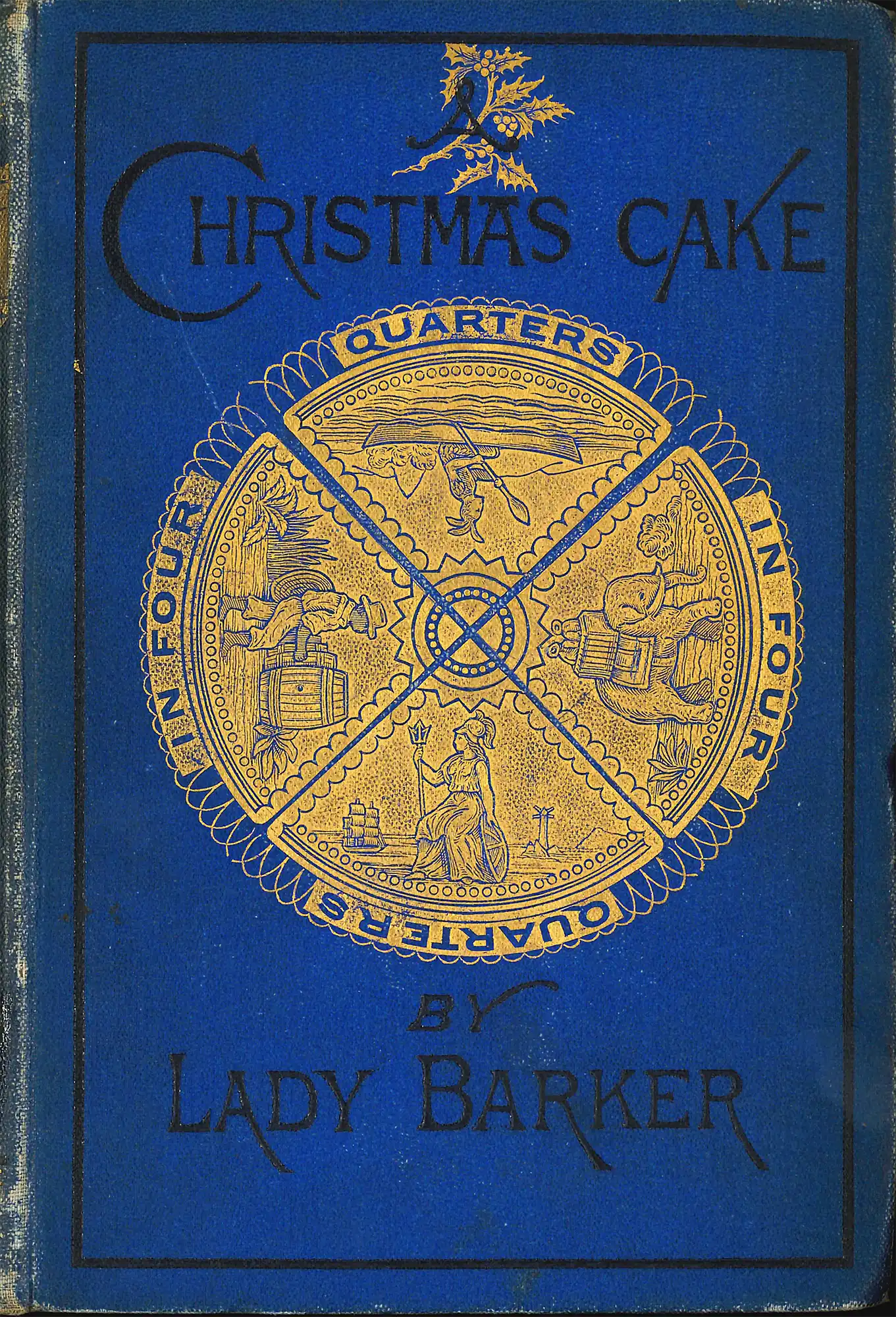
Lady Barker. A Christmas cake in four quarters. New edition. London: Frederick Warne, 1880.
Lady Mary Anne Barker (1831-1911) is best known for Station life in New Zealand, first published in 1870. It is a lively account of her experiences as the wife of a Canterbury sheep farmer, Frederick Napier Broome, her second husband (and later, an eminent colonial administrator).
Born in Jamaica, Lady Barker was a lady of empire who travelled widely, joining Broome in New Zealand via England in 1865. Broome purchased a Canterbury sheep run on the south bank of the Selwyn River. After three years, in December 1868, the couple returned to England and worked as journalists.
Station life in New Zealand, based upon Lady Barker’s letters written home to her younger sister, was a huge success. Adopting the persona of an upper-middle class Englishwoman, her account is intimate of tone and reveals her enthusiasm for colonial life and sometimes unconventional attitudes. It established her literary reputation and a sequel, Station amusements in New Zealand, followed in 1873.
Lady Barker wrote some twenty books with a wide range of settings, but none were as successful as her two ‘Station’ works. Her subsequent books A Christmas cake in four quarters and Stories about- also feature New Zealand settings and references.
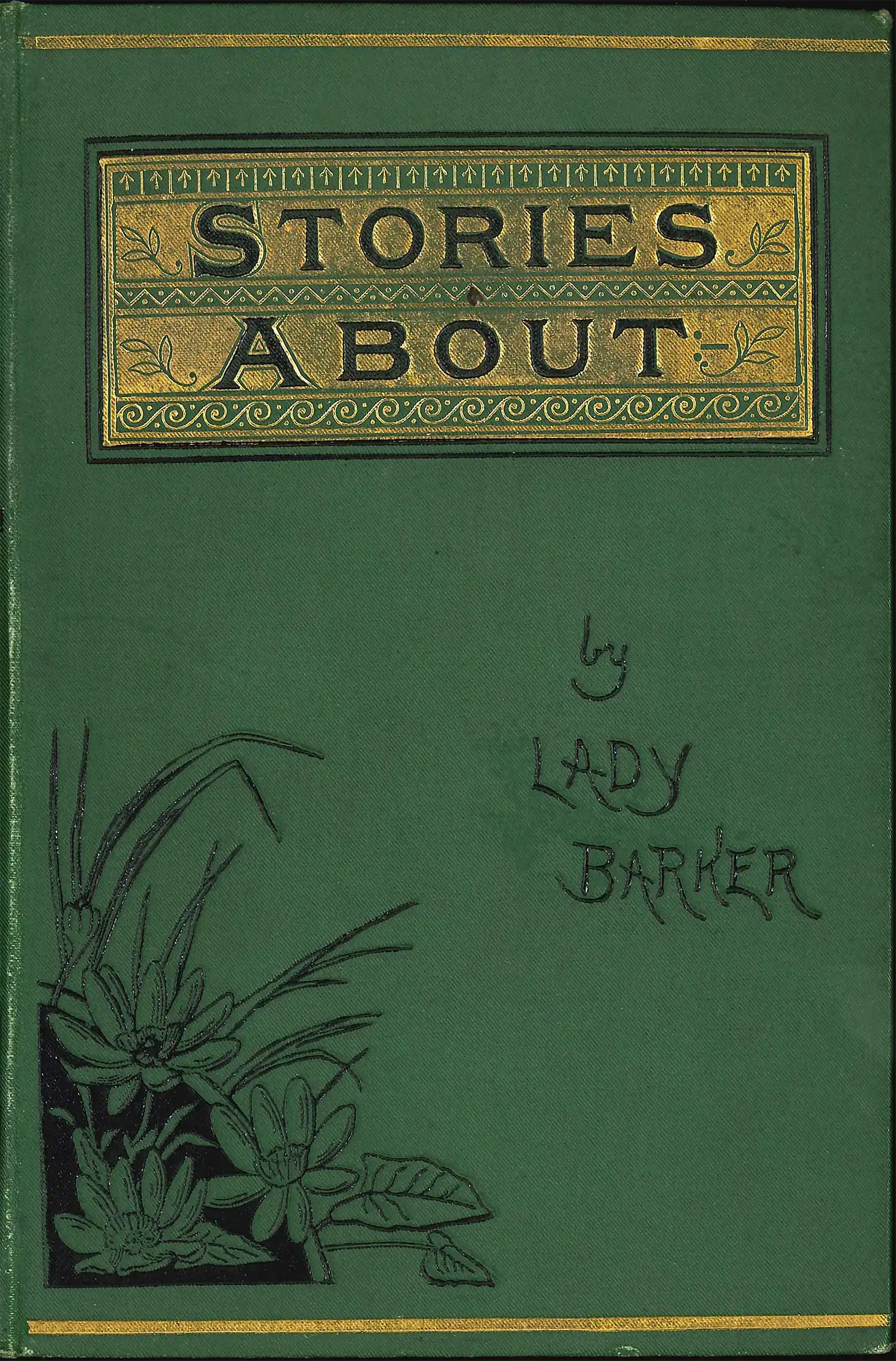
Lady Barker. Stories about -. New edition. London: Frederick Warne, 1887.
Lady Mary Anne Barker (1831-1911) is best known for Station life in New Zealand, first published in 1870. It is a lively account of her experiences as the wife of a Canterbury sheep farmer, Frederick Napier Broome, her second husband (and later, an eminent colonial administrator).
Born in Jamaica, Lady Barker was a lady of empire who travelled widely, joining Broome in New Zealand via England in 1865. Broome purchased a Canterbury sheep run on the south bank of the Selwyn River. After three years, in December 1868, the couple returned to England and worked as journalists.
Station life in New Zealand, based upon Lady Barker’s letters written home to her younger sister, was a huge success. Adopting the persona of an upper-middle class Englishwoman, her account is intimate of tone and reveals her enthusiasm for colonial life and sometimes unconventional attitudes. It established her literary reputation and a sequel, Station amusements in New Zealand, followed in 1873.
Lady Barker wrote some twenty books with a wide range of settings, but none were as successful as her two ‘Station’ works. Her subsequent books A Christmas cake in four quarters and Stories about- also feature New Zealand settings and references.




